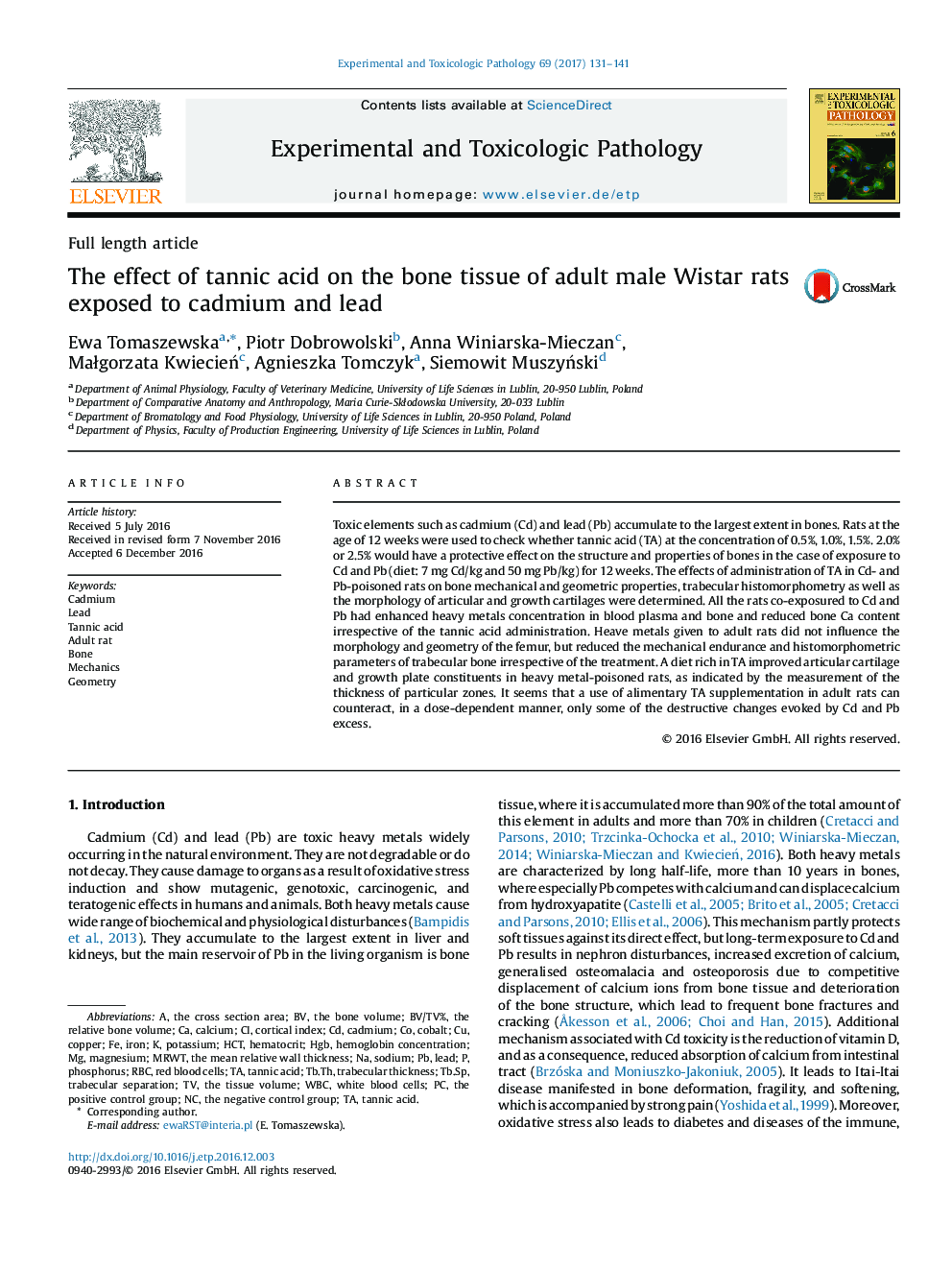| Article ID | Journal | Published Year | Pages | File Type |
|---|---|---|---|---|
| 5549846 | Experimental and Toxicologic Pathology | 2017 | 11 Pages |
Toxic elements such as cadmium (Cd) and lead (Pb) accumulate to the largest extent in bones. Rats at the age of 12 weeks were used to check whether tannic acid (TA) at the concentration of 0.5%, 1.0%, 1.5%. 2.0% or 2.5% would have a protective effect on the structure and properties of bones in the case of exposure to Cd and Pb (diet: 7Â mg Cd/kg and 50Â mg Pb/kg) for 12 weeks. The effects of administration of TA in Cd- and Pb-poisoned rats on bone mechanical and geometric properties, trabecular histomorphometry as well as the morphology of articular and growth cartilages were determined. All the rats co-exposured to Cd and Pb had enhanced heavy metals concentration in blood plasma and bone and reduced bone Ca content irrespective of the tannic acid administration. Heave metals given to adult rats did not influence the morphology and geometry of the femur, but reduced the mechanical endurance and histomorphometric parameters of trabecular bone irrespective of the treatment. A diet rich in TA improved articular cartilage and growth plate constituents in heavy metal-poisoned rats, as indicated by the measurement of the thickness of particular zones. It seems that a use of alimentary TA supplementation in adult rats can counteract, in a dose-dependent manner, only some of the destructive changes evoked by Cd and Pb excess.
